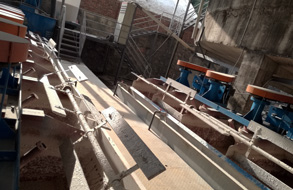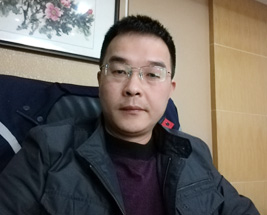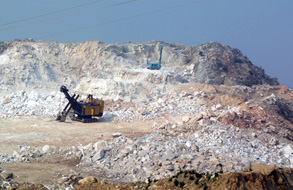Great advance brought by extracting lithium from lepidolite
----Interview with Xu Changzhi
General Manager
Ganzhou Yatai Tungsten Co., Ltd.
- Ganzhou Yatai Tungsten Co., Ltd. is mainly engaged in lithium carbonate extraction from lithium ores, such as lepidolite concentrate, spodumene concentrate, lithium iron mica concentrate and lithium porcelain ore concentrate, etc. Not adopting the traditional lithium lepidolite calcinations process, which usually emits a great deal of unmanageable acid frog, the company makes use of a unique calcinations technology that fully meet the national environmental emission standard.
- Asian Metal:Hello, Mr. Xu, please briefly introduce your company's business.
- Mr. Xu: We formally put lithium carbonate into production in June 2017 after upgrading production lines through new technology, with output of 3tpd of battery lithium carbonate 99.5%min (but containing more impurities than normal kind). In January 2018, lepidolite dressing plant formally went into operation, and the technology breakthrough on lithium extraction from lepidolite was realized. That is to say, we can produce standard battery grade lithium carbonate 99.5%min by using lepidolite concentrate. Our actual production cost of lithium carbonate is far lower than that that of our counterparts based on the current prices for lepidilite and spodumene concentrate. At the same time, we aimed to realize the production goal of 5,500tpy of battery grade lithium carbonate in 2018.

- Asian Metal:Although the development of new energy power vehicle market still benefits from the new energy vehicle subsidy policy, the extension period of the new energy subsidy policy will be expired soon. Downstream battery and automobile plants are mainly consuming stocks, and thus prices for lithium carbonate are under downward pressure due to limited purchase willing from the market. So what's your opinion about this?
- Mr. Xu: Lithium iron phosphate and ternary material are the main cathode materials related to the new energy subsidy policy. The demand for lithium carbonate from ternary material industry basically remained stable after the Spring Festival holiday, and thus the demand for the material would mainly from lithium iron phosphate industry in the short term. However, after the new energy subsidy policy was further specified, the existing lithium iron phosphate model cannot meet the high subsidy requirement, and thus subsidies can't be applied for if we make no upgrade on the current model.
- Asian Metal:How do you think of the raw material market of chrome metal?
- Mr. Liu: We produce chrome metal out of chromium oxide green, the price of which is mainly affected by demand and supply relation and has stabilized at about RMB30,000/t (USD4,769/t) EXW Inc-VAT D/P. In addition, the ceramic companies run at a low operating rate, so chromium oxide green price is unlikely to rise. Prices for raw material chrome ore vibrate in a small range, showing little influence on the chromium oxide green market.The subsidy for some NCM523 products declined and downstream consumers for lithium carbonate cut rebuilding stocks, while speeded up R & D for new products, and thus prices for lithium carbonate moved down.
We believe downstream consumers will still purchase raw materials they need for production after the new subsidy policy is released on June 12, because they wouldn't halt production. In addition, the demand for lithium carbonate will further grow after producers put the new model into massive production, and prices for lithium carbonate wouldn't decline further.

- Asian Metal:The development of new energy vehicle boosts demand for lithium salt and lithium salt plants at home and abroad are expanding capacity. In addition, strong demand from battery industry also drives more fierce competition within lithium carbonate industry, so how did your company do to keep advantages among tough competition?
- Mr. Xu: As mentioned above, owning our own lepidolite dressing plant, firstly, we can directly crush lepidolite by our own to extract lithium carbonate. Actually, the process of lithium extraction from lepidolite is more complicated than that from spodumene, because there are more impurities needed to be dealt with. Located at Xinfang town, Yichun, our mine and dressing plant supply 1,800tpm of lepdolite to ensure stable raw material supply and maintain low cost. Furthermore, the requirement for lithium carbonate was higher after the requirement for ternary material quality was higher. Large enterprises turned to engage in production of lithium hydroxide because of more demand for the material later. What we did was to guarantee quality of products, which boosted more demand from the market.
- Asian Metal:What about the lithium carbonate capacity of you company now?
- Mr. Xu: The products we produced from February had reached the domestic standard of battery grade lithium carbonate with only 200ppm of sodium content. But with no crushing equipment, we received limited orders from downstream consumers. We totally produced 400t of industrial grade lithium carbonate in 2017. At present, we produce battery grade lithium carbonate at 4pd and plan to produce 200tpm in Q2.
- Asian Metal:You just mentioned you don't have a great number of downstream consumers to some extent, so will you intend to increase production lines in the short term?
- Mr. Xu: Yes, our main plan is to further improve product chain at present.
Owning front-end equipment such as rotary kiln, filter in lithium carbonate production, we need to equip with rear-end crushing equipment to meet other customers' needs.
- Asian Metal:Your company's capacity for lithium carbonate is small now compared with that of major lithium carbonate producers. The demand from cathode material market increasingly grows, so do you have plan to increase capacity in the near future?
- Mr. Xu: We don't have such plan temporarily and will still focus on front-end production. The environmental inspection is increasingly stricter in China, and the requirement is quite strict especially in the front-end of lithium carbonate production, including ore beneficiation, control of rotary kiln, approval of new capacity, as well as the treatment on waste water and waste material. Thus, we plan to cooperate with small enterprises now and focus on maintaining regular customers.
- Asian Metal: As far as we know, although lepdolite resource is rich in Yichun, other local enterprises with business of lithium extraction from lepdolite are also increasing capacity. In view of limited supply for the material, do you have any plan for raw material sourcing?
- Mr. Xu: Owning four small mines, our company's current capacity and operation capacity are at a low level, and we signed a two-year delivery contract. Now, our processing capacity of lepdolite is 80tpd and we expect to deal with 1,000t of raw ore and supply 120t of lepdolite in the near future. As we have no plan to raise output in the short term, the existing lepdolite resource is sufficient for our production at present.
- Asian Metal: The new energy vehicle market will increasingly make use of high-energy-density high nickel cathode material and do you have plan to engage in lithium hydroxide project?
- Mr. Xu: We have finished technology storage in lithium hydroxide production and will promote the material to the market in an appropriate time. The demand for lithium hydroxide monohydrate is mainly from the overseas market, while that from Chinese market grows slowly, so we won't increase output for the material until the demand stabilizes in China.
- Asian Metal: Thank you very much for your interview with Asian Metal and wish your company thriving!
- Mr. Xu: Thank you!




